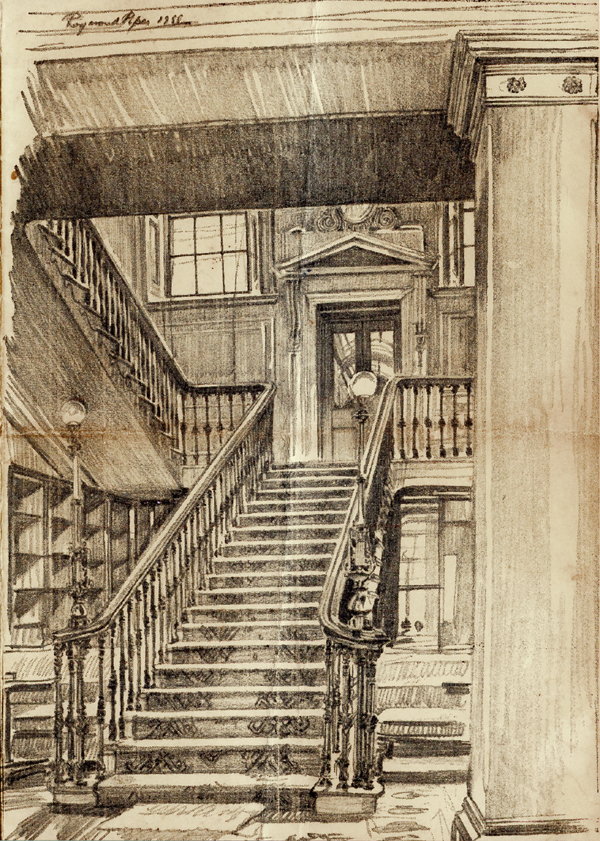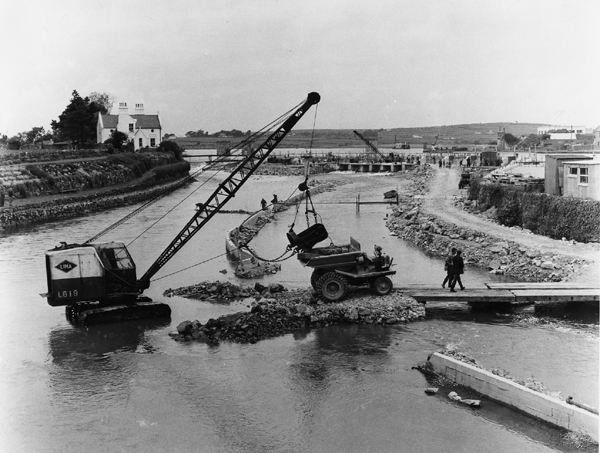Old Galway
Currach Racing in Salthill in the 1950s

In the early 1950’s a group of people got together to come up with ideas for extending the tourist season. They decided to focus on traditional Irish cultural events throughout the country, often with a local flavour and they called the project “An Tóstal”. A committee was set up in Galway and they came up with the concept of an All-Ireland Currach Racing Championships. Nothing like this had ever been done before, so it took quite a bit of organisation.It proved to be an inspired decision as these races became one of the top sporting attractions in the country.In 1953, the course was set up off the Claddagh, and every year after that, the races took place in Salthill.
The Royals in Galway, 1903

On the 30th of August, 1903, The Prince of Wales, who later became King Edward VII came to Galway. He was accompanied by his wife who would later be Queen Alexandra. They had sailed Into Killery Harbour aboard the royal yacht, and toured part of Conamara before boarding the Clifden train at Ballinahinch which brought them into Galway. Their visit to the city was full of pomp and ceremony.Galwegians had turned their city into a blaze of colour and decoration with Venetian poles all along the route supporting flags and banners and streamers. The decoration committee were assiduous in their duties, and Messrs Binns and Tighe and Murphy (who was the secretary)
The Men Who First Brought Sam to Galway

Galway reached the All-Ireland football final for the first time in 1919, when they were beaten by Kildare by 2 – 5 to 0 – 1. In 1922 they were beaten by Dublin by 6 points to 4. In 1925 they won it for the first time, beating Cavan by 3 – 2 to 1 - 2. In 1928, the Sam Maguire Trophy was presented to the GAA, and ever since, it has been the dream of every county in Ireland to hold it aloft in Croke Park on the third Sunday in September.In 1933 Cavan beat Galway in the final by 2 – 5 to 1 – 4, but in defeat the Galway team were hailed as a major force for the future, a prediction that turned out to be accurate as they beat Dublin the following year by 3 –
Corpus Christi Processions

My memory of these processions is that everyone assembled in the grounds of St. Mary’s College. Prayers were recited there, possibly a rosary, and then we walked, in organised groups, to Eyre Square. The route brought us along St. Mary’s Road, Henry Street, Dominick Street, over O’Brien’s Bridge, up Shop Street and around Eyre Square. We entered the park via a gate opposite The Great Southern and were shown to our places, and there the assembled multitude attended Benediction. A special stand was erected to accommodate the altar. Hymns were sung.
Thanks for the Memories

Seapoint Ballroom was officially opened at 10pm on July 17th, 1949 by Joe Costelloe, Mayor of Galway. Noel Finan bought the site from Jim and Mary Cremin who were brother and sister. They ran a famous seawater baths there, a kind of health spa of its day. At the time, Salthill was a small village with a few hotels, B&Bs and shops. It also had the Hangar which was run by John Allen, but it closed down in Race Week when dancing moved into a marquee in Eyre Square. At the time it was 1/6 into the Hangar for women and 1/9 for men.Noel Finan realised that young people coming to Salthill wanted something more than the salt air and to be clean. He sold the family pub
Howsa goan luveen…

“Arrah, howsa goan luveen.”
“Musha, not too bayad dontcha no, how’s yersel?”
“Oanlah mite-ah. C’mere I wansha, ware yoftah?”
A Relic of Old Decency

Our image today is of an original drawing done in 1958 by Belfast artist, Raymond Piper (now deceased) of the beautiful staircase in the Great Southern Hotel. When one entered the hotel, the reception desk was to the left, there was a small corridor leading to the dining room on the left, and another leading to the bar on the right. Just past these was a comfortable lounge area, and at the end of this was this magnificent staircase leading to reception rooms upstairs, and directly to the station platform.Construction began on the hotel one hundred and sixty years ago. The site was previously occupied by a block of tenements which was
Dredging the River

Alexander Nimmo made a survey of Lough Corrib almost two hundred years ago in which he wrote the following ; “The lake has 50 miles of shore, occupies 30,000 Irish acres and contains 1,000 acres of arable land in its isles, and contracts into a very spacious river about two and a half miles above Galway, which, flowing by the town, communicated with the Atlantic.
